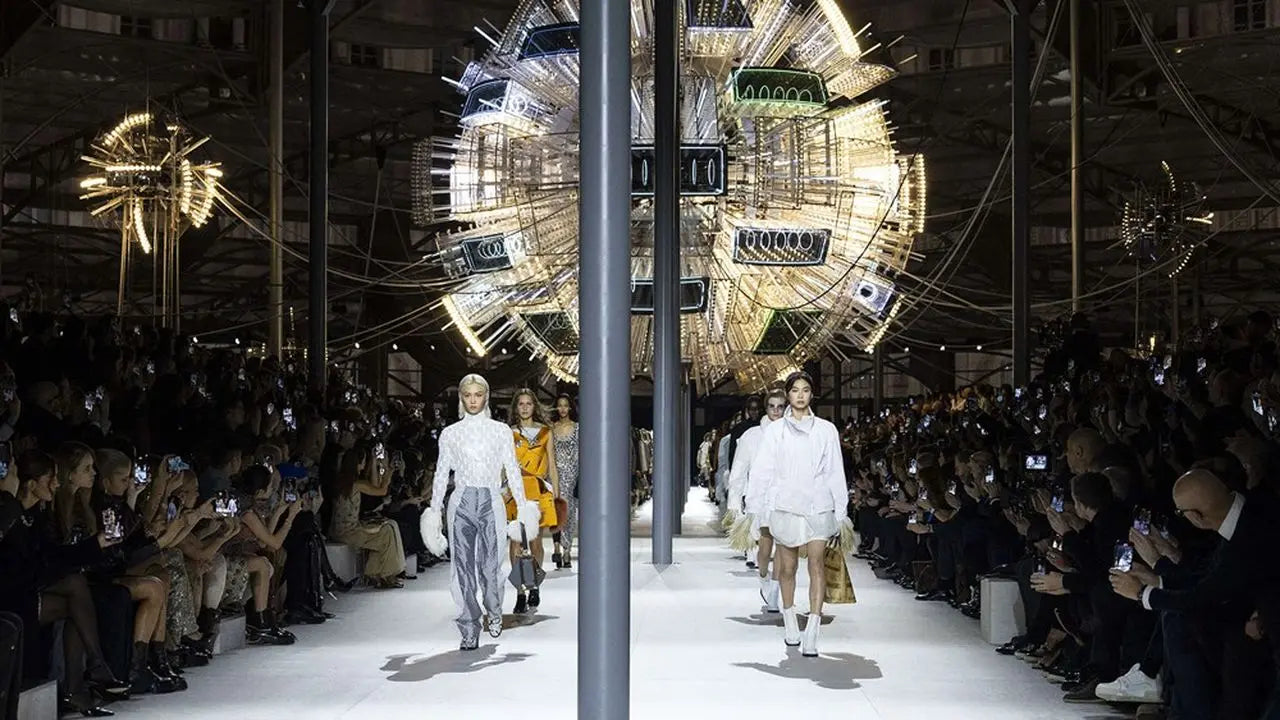For the first time in the history of the Louvre, an entire exhibition will be dedicated to fashion, an event that will undoubtedly mark a turning point in the way this iconic museum engages with the contemporary era. Of course, a few houses have already had the honor of crossing the doors of this mythical place, but this time, it is not simply a showcase for a few pieces, but a real immersion in the world of fashion, exploring a central theme: silhouette and the body.
What the Louvre seeks to accomplish with this exhibition is more than a simple homage to fashion designers. It is about showing the influence that classical art can have on modern fashion, how the thousand-year-old works of this museum have crossed the ages to continue to inspire the collections of today's designers. A bridge is thus built between the past and the present, a dialogue between the immaculate marble statues and the fluid fabrics of the haute couture catwalks.
Olivier Gabet, the director of the Louvre's decorative arts department, explains this vision well when he says that this exhibition aims to demonstrate the importance of museums for fashion designers, to understand how the Louvre's collections, in particular, can nourish contemporary creativity. And there is reason to be impressed. With 65 jumpsuits and 30 accessories in the spotlight, this exhibition promises to be a real treat for fashion and art lovers. The selected pieces come from major French, English, Italian, American fashion houses, and also directly from the designers' own workshops.
And what designers! Karl Lagerfeld, Yohji Yamamoto, Dolce & Gabbana… names that resonate like legends in the world of fashion. These iconic figures will be represented, showing how their works draw inspiration from classical art to create resolutely modern, almost timeless pieces. But the exhibition doesn’t stop there. It will also pay poignant tribute to Marie-Louise Carven, a designer whose passion for art led her to donate numerous works to the Louvre. Her legacy, both artistic and human, hangs over this exhibition, reminding us how art and fashion are inextricably linked.
This is not just an academic exercise. It is a bold attempt to revitalize interest in the Louvre’s collections, especially among younger generations. Gabet himself says it with some passion: fashion design is an “excellent bridge” between generations and museums. It is about taking something very old and presenting it in a way that is fresh, new, and above all, alive. And perhaps this is where the real value of this exhibition lies: in its ability to inject new energy, to breathe new life into works of art that, while majestic, may seem distant to some.
There is an almost subversive side to this approach, which consists of bringing together antique busts and haute couture creations, of bringing together two worlds that, a priori, have nothing in common. And yet, it is this encounter that could well transform our perception of classical works of art, by reintegrating them into a contemporary context, by making them accessible, even desirable, for an audience that might never have crossed the doors of the Louvre otherwise.
Ultimately, this exhibition could well be the beginning of a new era for the Louvre, an era where past and present come together and enrich each other, where museums are no longer just places of memory, but also places of creation and innovation. So why not give it a try? Why not go and see for yourself how fashion and art can come together to create something truly unique, something that speaks to all of us, no matter our age or cultural background. Because, ultimately, that may be the Louvre’s true mission today: to show us that art, in all its forms, is more alive than ever.



Share: